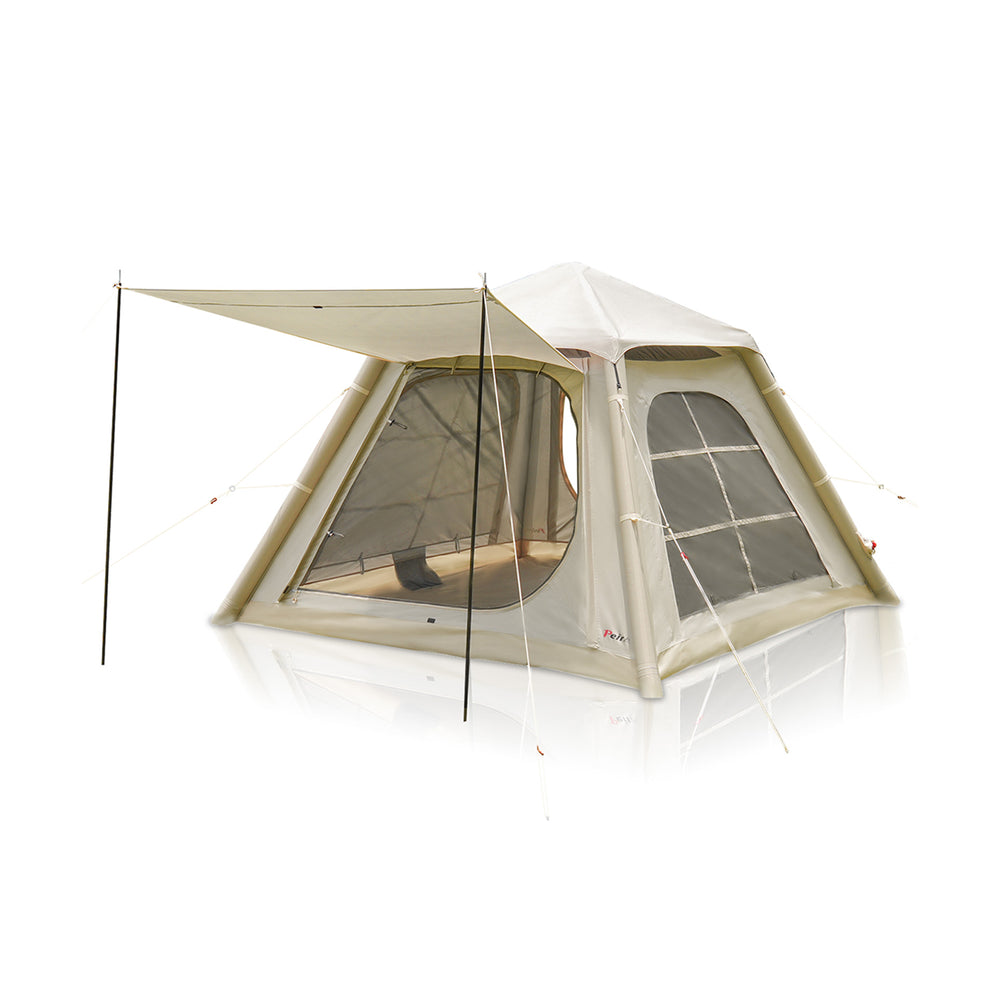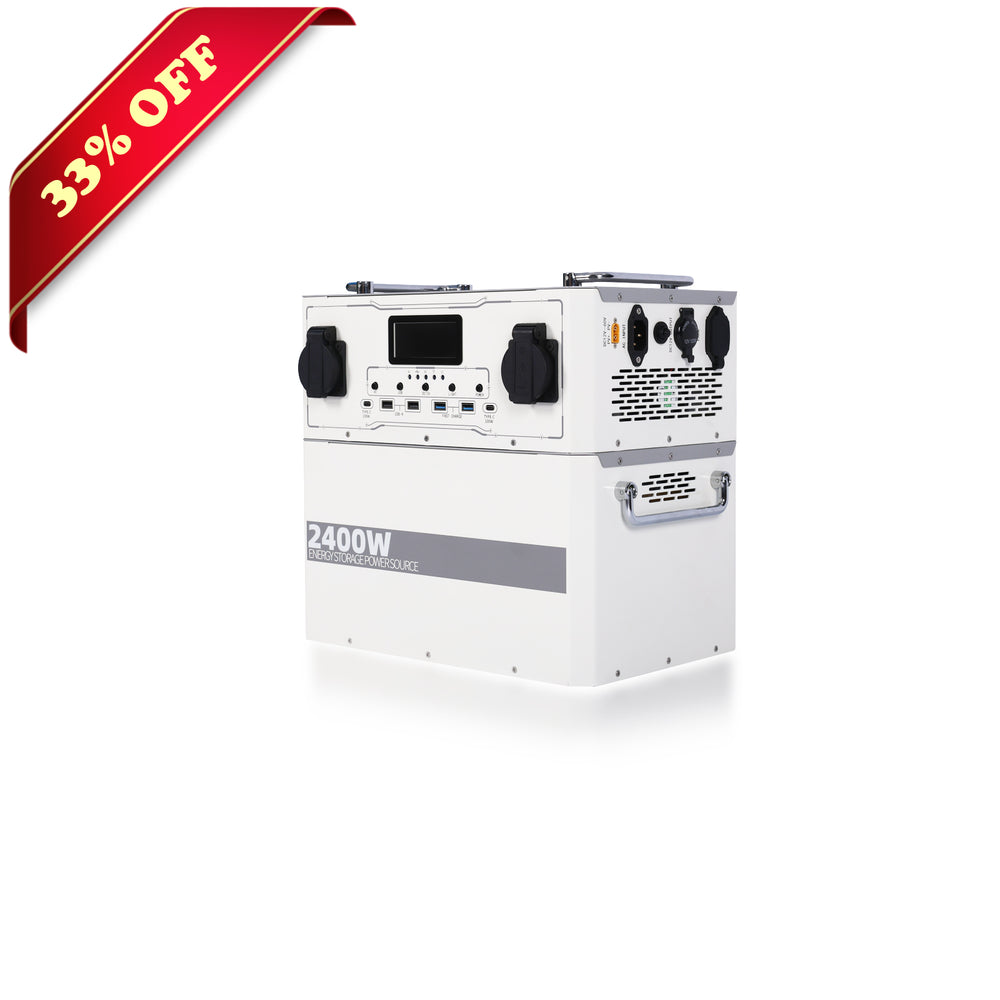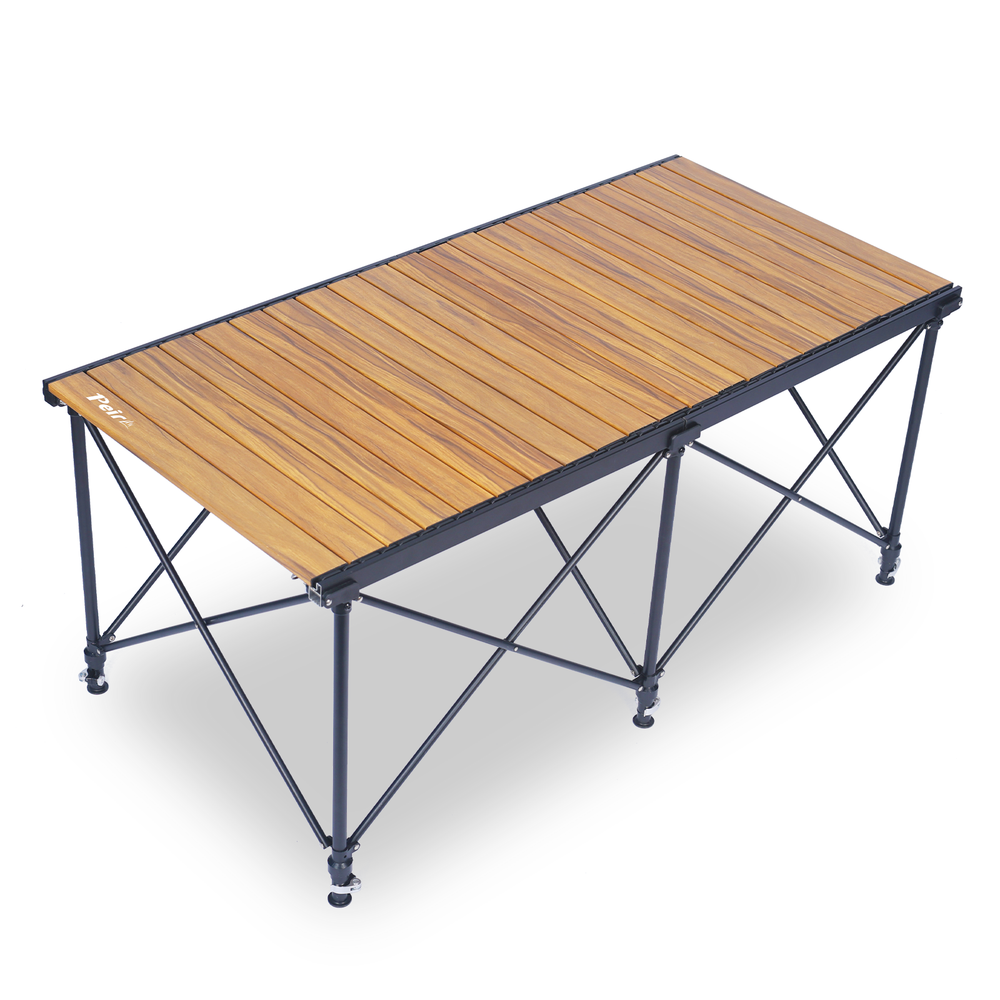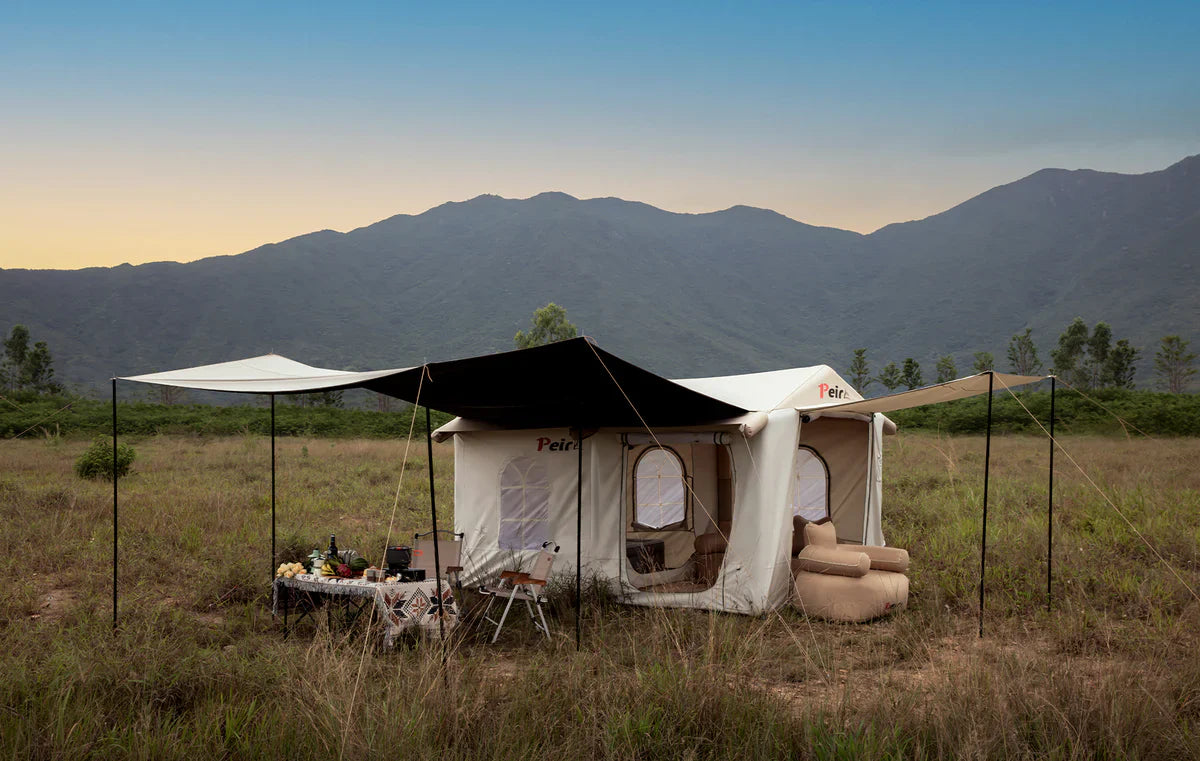Regular tents designed for camping are not meant to be permanent. They can’t withstand harsh weather conditions for long periods. These tents are often called “permanent glamping tents” or “tent homes” They’re made with much sturdier materials than regular tents and may include features like sidewalls and platforms for better weatherproofing. These can be used for living spaces, storage, or even luxury glamping setups.
Glamping, the harmonious blend of glamour and camping, offers outdoor enthusiasts the chance to embrace nature without sacrificing luxury. But one question that often arises is, can these tents withstand the test of time and weather, staying pitched all year round? Let’s unravel the facts.
The Durability of Glamping Tents
Most glamping tents are meticulously crafted from heavy-duty, durable fabric designed to endure various elements. These aren’t your average weekend camping tents; they’re built to last. Their material, combined with a robust structural design, ensures they can comfortably remain erect for weeks, if not months. At Peirhw, our glamping tents are built from the most sturdy materials. This is why we offer glamping tents that can stay up all year round. As an owner of a glamping site, that means you do not have to dismantle the tents each year, so you can focus on the more important parts of your job.
Suitable for a variety of temperatures
A distinguishing feature of glamping tents is their much better adaptability across seasons as compared to a camping tent. The vents and breathable fabric ensure proper circulation and prevent overheating during hot summers. But it doesn’t stop there. The sturdy build of these tents can endure the occasional gust and rain shower typical of fall. At rainy chilly days you may take some precautions, but this will give you a stay closer to nature, even during the rainy months. At spring, as nature reawakens, these tents provide a frontline view of blossoming flora, all while protecting against spring showers. With the right heating solutions, even a chilly night can be comfortably endured. And what better place to immerse oneself in the awakening of nature than in a glamping tent?
Factors influencing year-round viability
Material and construction:
- Durability: High-quality glamping tents are typically made from durable materials such as heavy-duty canvas, which is treated to be weather-resistant. These materials can withstand various elements, including rain, wind, and, to some extent, snow.
- Insulation: Some glamping tents are designed with insulation to help maintain a comfortable temperature inside, making them suitable for colder weather. Additional features such as double layers, thermal linings, and insulated flooring can enhance year-round usability.
Structural integrity:
- Framework: The framework of a glamping tent plays a crucial role in its ability to stay up all year. Sturdy frames made from materials like steel or reinforced wood can better withstand harsh weather conditions.
- Anchoring: Proper anchoring systems are essential to ensure the tent remains stable in high winds or heavy snow. Permanent or semi-permanent setups often include strong anchors and secure bases.
Location and climate:
- Weather conditions: The feasibility of keeping a glamping tent up all year greatly depends on the local weather. Tents in mild climates with moderate temperatures and infrequent severe weather can often remain up year-round. However, areas with extreme weather conditions, such as heavy snowfall, intense winds, or excessive humidity, may pose challenges.
- Site preparation: Proper site preparation can mitigate some weather-related issues. This includes selecting elevated sites to avoid flooding, ensuring good drainage, and protecting against wind exposure with natural barriers like trees or artificial windbreaks.
Maintenance and care:
- Regular maintenance: To ensure the longevity of a glamping tent, regular maintenance is essential. This includes checking for wear and tear, resealing seams, treating the fabric to maintain its water resistance, and removing snow or debris from the roof.
- Seasonal adjustments: Making adjustments for different seasons can help. For example, adding insulation or heating sources during winter and ensuring adequate ventilation during summer can make the tent more comfortable and durable year-round.
Examples of year-round Glamping
Many glamping sites around the world successfully operate year-round by using high-quality tents and employing strategies to cope with varying weather conditions. For instance:
- Winter glamping: In colder regions, glamping tents may include wood-burning stoves, electric heaters, and extra insulation.
- Tropical glamping: In tropical areas, glamping tents are designed to handle high humidity and heavy rains. Features like elevated platforms, breathable fabrics, and extensive ventilation are common.
Recommended reading:
How to Extend the Lifespan of Your Glamping Tents
Give your guests care instructions for the safari tents
First, the most important thing you should do is tell your guests how to care for the safari tents. You can provide this information in a number of ways. We strongly suggest having an instruction sheet in each safari tent. You can also give an instruction sheet to your guests upon their arrival or even visit your guests when they arrive to explain how to use the safari tent. To minimize the risk of damage to the glamping tents’ material and to prevent future leakages, it is best to make your guests aware of some key things.
Instruct your guests not to hang wet towels or laundry over the canvas. Your guests could easily be tempted to hang their wet towels after visiting the pool but this is not good. It can damage the canvas and decrease its water-resistant properties.
- Ask your guests to not place chairs or other furniture directly against the canvas. Doing so can cause friction when the furniture rubs against the tent fabric. This can damage the material and potentially cause leaks.
- Grease and oil are not good for the safari tents because they affect the water-resistance. Ask your guests to avoid touching the canvas as much as possible.
- Advise your guests to provide good ventilation if they cook in the safari tent. Good ventilation reduces condensation on the canvas.
- Tell your guests to always make sure the kitchen appliances and the gas are turned off when they leave the tent or go to sleep.
Use extra protection outside the holiday season
Our safari tents have been treated to protect them from UV-radiation and other weather influences, making them resistant to mold and dirt. Over time, the continuous exposure to UV light and the elements can affect the protective properties of the canvas. We have a winter pack that can be used outside of the holiday season to provide additional protection of the canvas against various weather and environmental effects. Using this winter pack is optional.
Place the glamping tents at an optimal location on your site
Decide which spot is best for the glamping tents before you position them on-site, You want the glamping tents to be placed in a way that meets your guests’ expectation and also extends the life of your tents.
Suggestions for positioning your glamping tents near the forest
Is your campsite near a forest? Do you want the glamping tents near the forest? Then try and have a little distance between the trees and the safari tents. This allows enough space for daylight and wind to circulate keeping the tents well ventilated and enabling them to dry easily. Use a mild 3% chlorine solution and a soft brush to remove any mold or algae growth.
Suggestions for positioning your glamping tents near the sea
If your campsite is in a coastal location we advise using extra measures to keep your tents beautiful. Remove salt deposits from the canvas and PVC roof with a soft brush before and immediately after the holiday season. This will keep your safari tents in good condition. It is important to remember to clean the ends of the wooden frame. Sand and salt residues will cause the wood to remain wet for longer and that can lead to early rot.
Keep your tents fresh and clean
Do not use soap to clean the tent cloth if there is mud residue on the tent or the groundsheet. Soap causes the material to deteriorate and reduces its protection against mold and leaks. Good ventilation is important. Leave the safari tents open during good weather when they are not being used by guests.
Regularly check your glamping tents
After guests leave we recommend checking the glamping tents to make sure that there is no damage and that everything has been left neatly. Pay attention to the small details, like the zippers, during this check. If a zipper is no longer working correctly then you can easily repair it. This will prevent you from having to replace the entire zipper. Lubricating the zippers annually helps keep them in good condition.












 Peirhw Inflatable House Tent - Starry Night Love
Peirhw Inflatable House Tent - Starry Night Love
 Peirhw Glamping Tents - Friendship Castle
Peirhw Glamping Tents - Friendship Castle
 Peirhw Inflatable Canopy Tent - Adventurer
Peirhw Inflatable Canopy Tent - Adventurer



 Peirhw Portable Air Conditioner
Peirhw Portable Air Conditioner
 【Advance Sale】Peirhw Portable Power Station 2400W
【Advance Sale】Peirhw Portable Power Station 2400W
 【Advance Sale】Peirhw Portable Power Station 600W
【Advance Sale】Peirhw Portable Power Station 600W





 Peirhw Self Inflating Sleeping Pad
Peirhw Self Inflating Sleeping Pad
 Peirhw Air Mattress (8" Queen Type)
Peirhw Air Mattress (8" Queen Type)
 Peirhw Camping Sleeping Bag
Peirhw Camping Sleeping Bag


 Peirhw Butterfly-shaped Canopy for Camping
Peirhw Butterfly-shaped Canopy for Camping
 Peirhw Camping Waterproof Canopy (Cannot be Purchased Separately)
Peirhw Camping Waterproof Canopy (Cannot be Purchased Separately)


 Peirhw Outdoor Folding Chairs
Peirhw Outdoor Folding Chairs
 Peirhw Folding Camping Table
Peirhw Folding Camping Table












